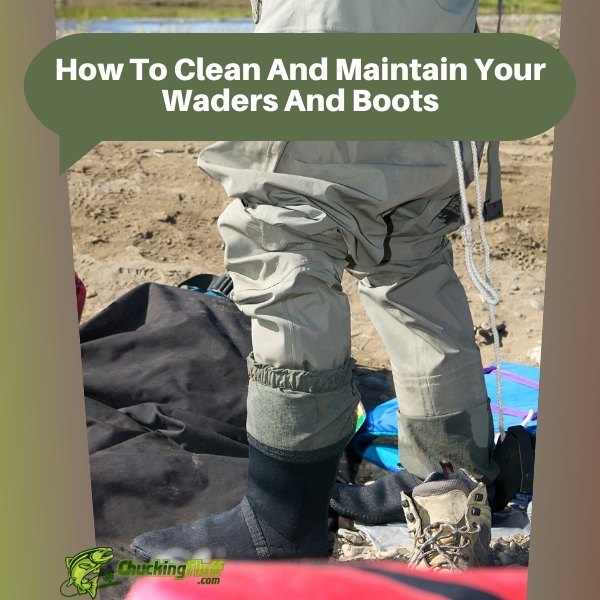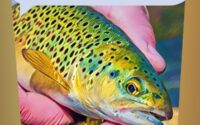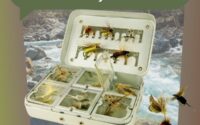| Disclosure: Just to be open and honest the buttons and links you click on in the website will in most cases take you to another website where you can purchase the products I am reviewing. As an Amazon Associate I earn from qualifying purchases. |
How To Clean And Maintain Your Waders And Boots
Quick Post Navigation
- Why Cleaning And Maintenance Matter
- Essential Tools and Supplies You’ll Need
- Step-By-Step Guide to Cleaning Waders
- Step-By-Step Guide to Cleaning Boots
- How to Repair Minor Damages to Waders and Boots
- Waterproofing and Conditioning Your Gear
- Storing Waders and Boots For The Off-Season
- Tips For Avoiding Common Mistakes During Cleaning and Maintenance
- Conclusion
- FAQs
- “Check out some of our other Buying Guides”
Ever found yourself knee-deep in a river, wondering why your once-reliable waders are suddenly letting water seep through? Or perhaps you’ve noticed your boots are developing an unpleasant odor that just won’t go away? Maintaining your waders and boots might not be the most glamorous part of your fishing or hunting routine, but it’s essential for ensuring your gear performs well and lasts for many seasons to come.
Proper maintenance isn’t just about looks—it’s about preserving the integrity and functionality of your equipment. This guide will walk you through everything you need to know about cleaning, repairing, and storing your waders and boots so you can enjoy your outdoor adventures without a hitch.
Why Cleaning And Maintenance Matter
Prolonging Durability
Waders and boots are investments. Regular cleaning and maintenance can significantly extend the life of these pricey items. When left unattended, dirt, grime, and moisture can wear down the material, weaken seams, and cause leaks or tears. By taking a little time after each use to clean and dry your gear, you’re essentially adding years to its lifespan. After all, who wants to buy new waders every season?
Enhancing Performance
Dirty, stiff, or damaged gear can impact your performance on the water or in the woods. Waders that leak or boots that are slippery and cracked can not only be frustrating but also dangerous. A clean, well-maintained pair of boots will provide better traction, and your waders will offer better insulation and waterproofing. Regular maintenance ensures that your gear is always in top condition, so you’re ready for anything nature throws your way.
Essential Tools and Supplies You’ll Need
Before you start scrubbing, it’s crucial to gather the right tools and supplies. Not every cleaning agent or brush is suitable for all materials, and using the wrong one can cause more harm than good.
Cleaning Tools
- Soft-bristle brushes: Ideal for scrubbing away dirt without damaging delicate materials.
- Sponges and microfiber cloths: Gentle on surfaces, perfect for cleaning interior linings.
- Toothbrushes: For reaching those small nooks and crannies in boots and seams.
Cleaning Solutions
- Mild detergents: Choose non-toxic, biodegradable soaps to avoid damaging waterproof coatings.
- Isopropyl alcohol: Helps remove stubborn stains and disinfect without damaging fabrics.
- Vinegar solution: Great for neutralizing odors and preventing mold.
Repair Kits and Accessories
- Sealants: For fixing leaks in waders.
- Patches: To cover holes and tears.
- Waterproofing sprays: To re-coat your gear and ensure it remains water-resistant.
- Conditioners: For keeping leather boots supple and preventing cracking.
Step-By-Step Guide to Cleaning Waders
Maintaining your waders requires more than just a quick rinse. Let’s dive into the details of how to do it right.
Preparation
Before you start, gather all your cleaning supplies and set up a designated cleaning area. Make sure it’s well-ventilated and spacious enough to accommodate your waders when they’re fully stretched out.
Gathering Supplies
Place all your cleaning tools and solutions within arm’s reach to streamline the process.
Setting Up a Cleaning Area
Choose a space like a backyard, garage, or laundry room. Lay down a plastic sheet or old towel to catch any spills or dirt.
Cleaning The Outside
Start by rinsing the outside of your waders with cool, clean water. Use a soft-bristle brush to gently scrub away any dirt or debris. Be mindful of the seams and creases where grime can build up. Avoid using high-pressure water, as it can damage the material.
Cleaning The Inside
Turn the waders inside out and use a sponge or cloth with a mild detergent to clean the interior lining. This step is crucial for removing sweat and bacteria buildup, which can cause unpleasant odors over time. Rinse thoroughly and avoid soaking the material, as excessive water exposure can damage waterproofing.
Drying and Storing Your Waders
Air drying is the best method. Hang your waders upside down, allowing water to drain away from the seams. Ensure they are completely dry before storing to prevent mold or mildew. Store them in a cool, dry place away from direct sunlight to avoid UV damage.
Step-By-Step Guide to Cleaning Boots
Boots often bear the brunt of muddy trails, riverbeds, and rocky terrain. Cleaning them thoroughly after each use is key to keeping them in top shape.
Removing Mud and Debris
Use a brush or toothbrush to remove caked-on mud and dirt. For stubborn areas, let the mud dry first, then gently knock the boots together to break up the clumps.
Disinfecting Your Boots
After removing surface dirt, use a mixture of water and isopropyl alcohol (or a vinegar solution) to wipe down the interior and exterior of the boots. This will kill any lingering bacteria, eliminate odors, and prevent mold growth.
Drying and Storing Boots
Remove the insoles and laces before drying. Air-dry the boots naturally in a cool place. Avoid placing them near direct heat sources like radiators, as extreme temperatures can damage the materials.
How to Repair Minor Damages to Waders and Boots
Minor damages like small tears or loose soles don’t always mean it’s time to throw out your gear. Here’s how to handle these issues effectively.
Sealing Leaks in Waders
Locate the leak by filling the waders with water or using a bright light inside. Once found, dry the area thoroughly, apply a waterproof sealant, and let it cure for the recommended time.
Patching Holes and Tears
For small holes, use a patch from a repair kit. Apply the adhesive around the hole, place the patch firmly, and allow it to set. Make sure to follow the manufacturer’s instructions for the best results.
Reattaching Loose Soles on Boots
Use a strong adhesive designed for footwear. Clean the sole and the boot surface, apply the adhesive evenly, and press them together. Let them sit overnight for a secure bond.
Waterproofing and Conditioning Your Gear
Waterproofing sprays and conditioners keep your gear functioning as intended. These should be used periodically to maintain the water-repelling properties of your gear.
Waterproofing Waders
Use a spray-on waterproofing agent, focusing on seams and high-wear areas. Allow the waders to dry completely before use.
Conditioning Leather or Fabric Boots
Apply a leather conditioner or fabric-specific product to keep the material soft and flexible. This helps prevent cracking and reduces wear.
Storing Waders and Boots For The Off-Season
Proper storage during the off-season is just as important as regular cleaning and maintenance.
Storing Waders
Hang them upside down in a cool, dry space. Avoid folding or crumpling them, as this can create weak spots and lead to tears.
Storing Boots
Stuff boots with newspaper or a boot shaper to help maintain their shape. Store them in a ventilated area away from direct sunlight or heat.
Tips For Avoiding Common Mistakes During Cleaning and Maintenance
Even with the best intentions, mistakes can happen. Here’s what to watch out for:
Using Harsh Chemicals
Harsh chemicals can break down the materials of your waders and boots. Stick to mild, biodegradable soaps and avoid anything that contains bleach or heavy solvents.
Improper Drying Techniques
Using a hairdryer or leaving your gear in direct sunlight can cause cracking and shrinkage. Always air dry naturally.
Overlooking Minor Damages
Small nicks and tears might seem insignificant, but they can quickly turn into major issues if left unrepaired. Address them as soon as you notice them to prevent further damage.
Conclusion
Caring for your waders and boots may seem like a chore, but it’s one that pays off in the long run. Proper cleaning and maintenance will keep your gear functioning like new, allowing you to focus on what truly matters—enjoying the great outdoors. So, take the time to clean, repair, and store your equipment properly, and it’ll reward you with many more adventures to come.
FAQs
1. How often should I clean my waders and boots? It’s best to clean your waders and boots after every use, especially if they’ve been exposed to saltwater, mud, or heavy dirt.
2. Can I machine-wash my waders? No, machine washing can damage the fabric and waterproofing of your waders. Always hand-wash with mild detergent.
3. What should I do if my boots develop a persistent odor? Try disinfecting them with a vinegar and water solution. Make sure to let them dry thoroughly before storing to prevent mold and mildew.
4. How can I tell if my waders are leaking? Fill them with water or shine a bright light inside to locate leaks. Water will seep through any damaged areas, making them easy to spot.
5. Should I re-waterproof my gear after every cleaning? It’s not necessary after every wash, but reapply waterproofing treatments every few months or after heavy use to maintain their effectiveness.



